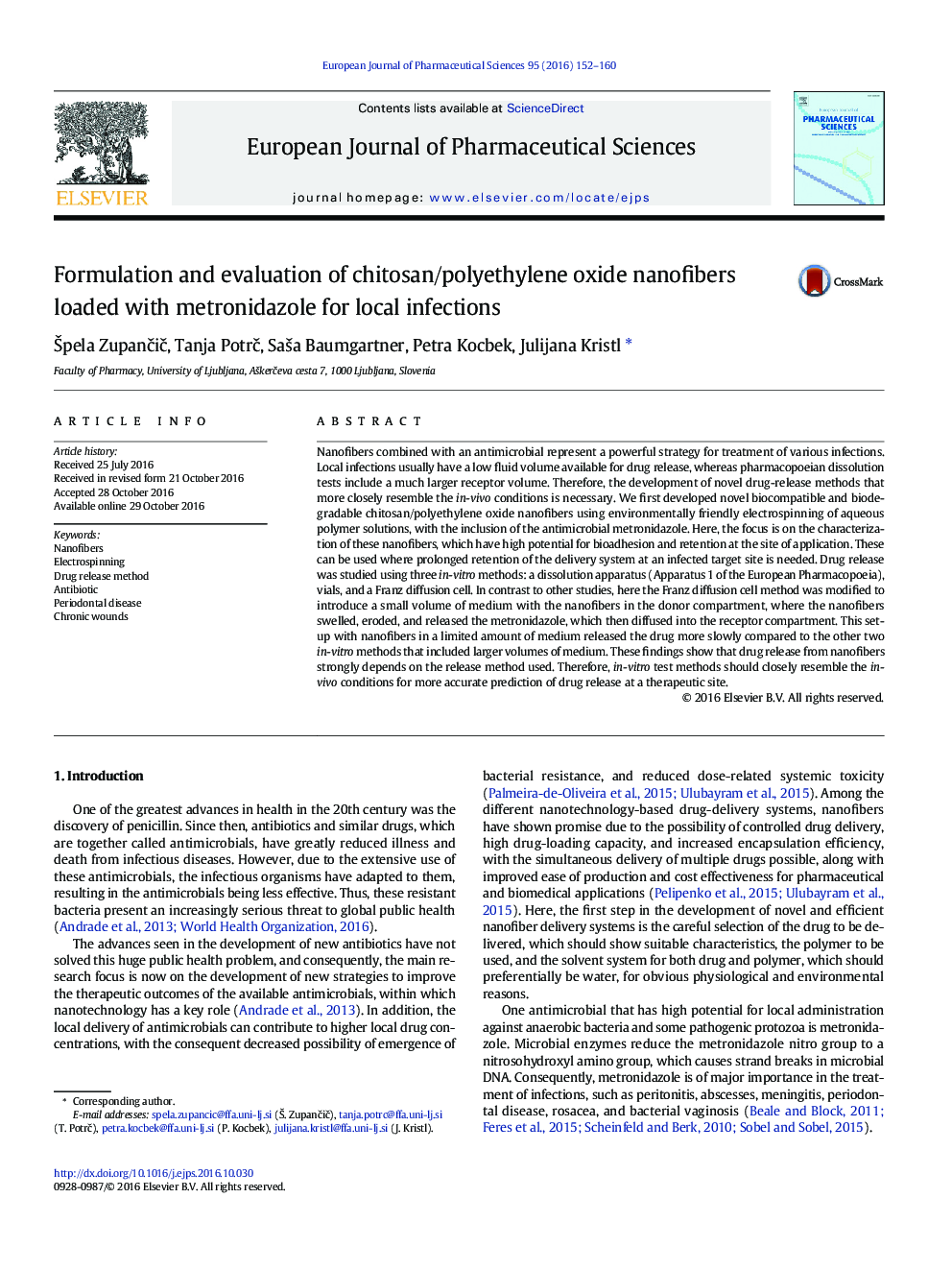| کد مقاله | کد نشریه | سال انتشار | مقاله انگلیسی | نسخه تمام متن |
|---|---|---|---|---|
| 5547950 | 1556155 | 2016 | 9 صفحه PDF | دانلود رایگان |
Nanofibers combined with an antimicrobial represent a powerful strategy for treatment of various infections. Local infections usually have a low fluid volume available for drug release, whereas pharmacopoeian dissolution tests include a much larger receptor volume. Therefore, the development of novel drug-release methods that more closely resemble the in-vivo conditions is necessary. We first developed novel biocompatible and biodegradable chitosan/polyethylene oxide nanofibers using environmentally friendly electrospinning of aqueous polymer solutions, with the inclusion of the antimicrobial metronidazole. Here, the focus is on the characterization of these nanofibers, which have high potential for bioadhesion and retention at the site of application. These can be used where prolonged retention of the delivery system at an infected target site is needed. Drug release was studied using three in-vitro methods: a dissolution apparatus (Apparatus 1 of the European Pharmacopoeia), vials, and a Franz diffusion cell. In contrast to other studies, here the Franz diffusion cell method was modified to introduce a small volume of medium with the nanofibers in the donor compartment, where the nanofibers swelled, eroded, and released the metronidazole, which then diffused into the receptor compartment. This set-up with nanofibers in a limited amount of medium released the drug more slowly compared to the other two in-vitro methods that included larger volumes of medium. These findings show that drug release from nanofibers strongly depends on the release method used. Therefore, in-vitro test methods should closely resemble the in-vivo conditions for more accurate prediction of drug release at a therapeutic site.
273
Journal: European Journal of Pharmaceutical Sciences - Volume 95, 1 December 2016, Pages 152-160
